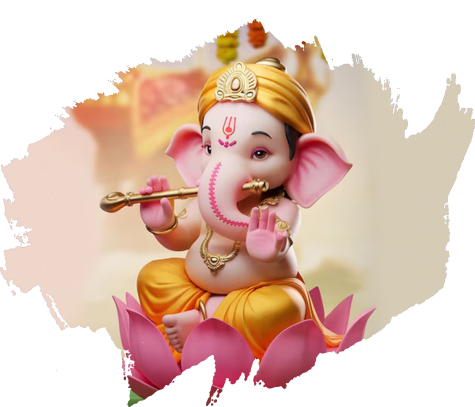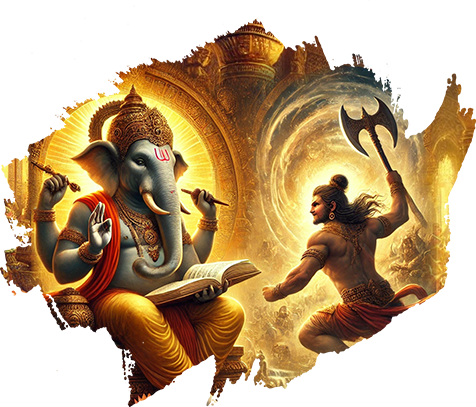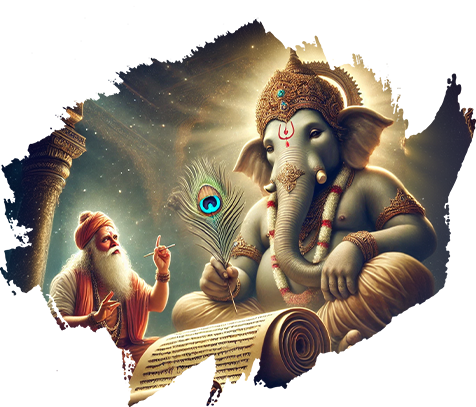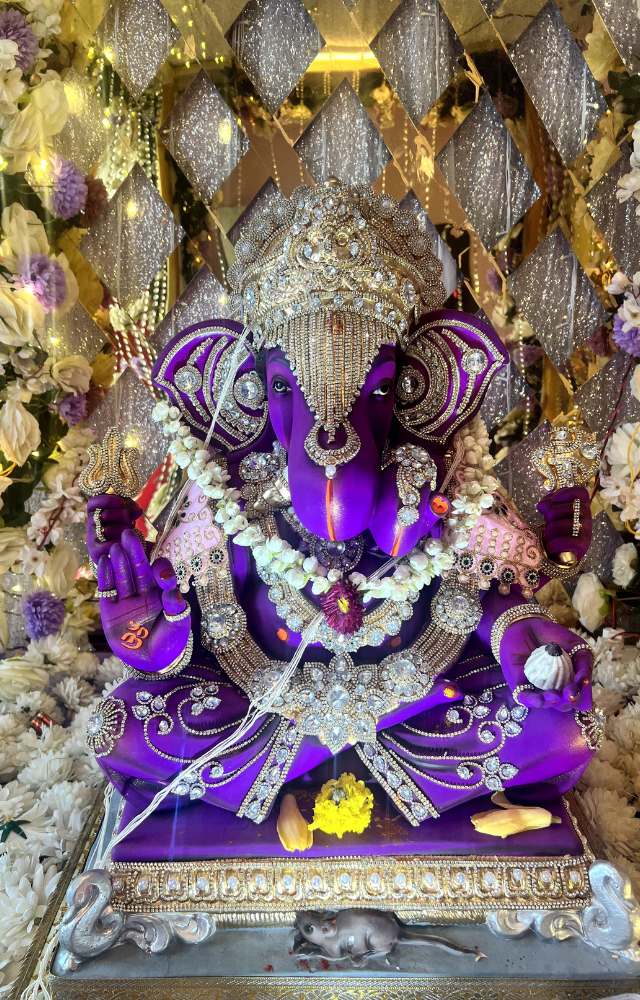Dive into the enchanting world of Lord Ganesha's stories, where you can explore his legendary tales through
interactive experiences, engaging audio narratives, and stunning illustrations. Each story brings to life Ganesha's
wisdom, divine adventures, and cultural significance, offering a rich and immersive journey into Hindu mythology.


The Birth of Ganesha

Goddess Parvati created Ganesha from the turmeric paste she used during her bath. She gave him life and asked him to guard the entrance while she bathed. When Lord Shiva, Parvati's husband, returned home, Ganesha, following his mother's orders, refused to let him enter. Angry at being stopped, Shiva, unaware of who Ganesha was, beheaded him in a fit of rage. Upon realizing Ganesha was Parvati's son, Shiva promised to bring him back to life. He ordered his attendants to bring the head of the first creature they found, which was an elephant. Shiva placed the elephant's head on Ganesha’s body and brought him back to life, declaring him his son and the leader of his followers, the Ganas.
Moral/Significance:The story signifies the importance of duty, obedience, and the cycle of life and death. It also explains why Ganesha is worshipped at the beginning of new ventures and is revered as the remover of obstacles.



The Broken Tusk

There are various legends about how Ganesha broke his tusk. One popular version tells that Ganesha broke off his own tusk to use it as a writing tool for the Mahabharata when his pen broke during the transcription. Another story narrates how Ganesha, in a battle with the demon Parashurama, lost his tusk while defending himself. Parashurama had thrown his axe at Ganesha, but out of respect for the weapon given to Parashurama by Shiva, Ganesha allowed it to hit him, breaking his tusk.
Moral/Significance:The broken tusk symbolizes sacrifice, the pursuit of knowledge, and the acceptance of imperfection in oneself. It also illustrates Ganesha's devotion to duty and learning.


























